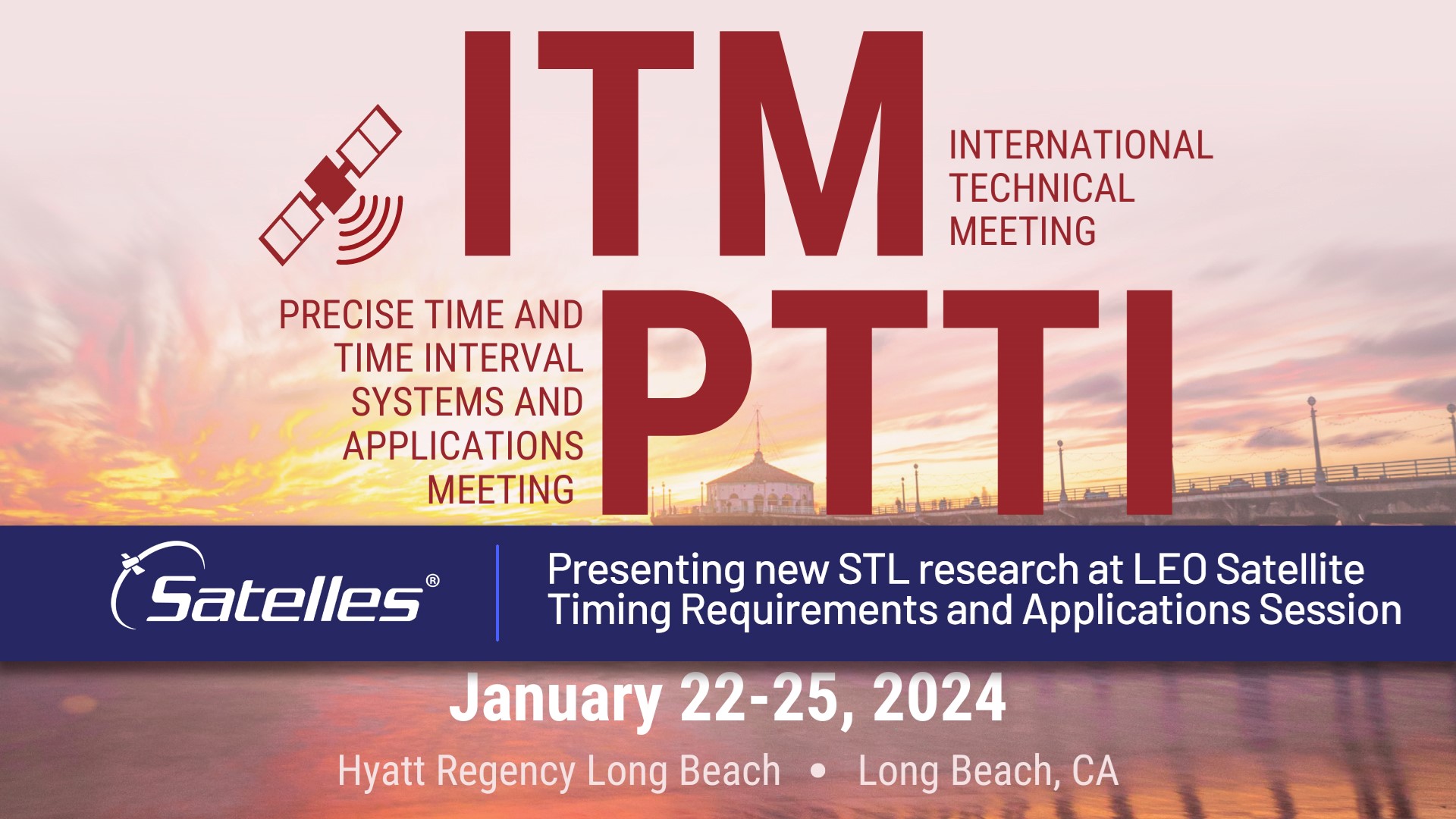Timing experts at Satelles and the U.S. National Institute of Standards and Technology (NIST) have once again teamed up on a study in which they collaborated to further improve the short-term stability of STL and the maximum time offset with UTC(NIST).
Their new paper, “The Long-Term Timing Performance of Satellite Time and Location Receivers Utilizing Signals from Low Earth Orbit Satellites,” will be presented at the Institute of Navigation (ION) Precise Time and Time Interval Systems and Applications (PTTI) meeting in Long Beach, California, January 22-25, 2024.
Based on 66-day and 100-day testing conducted at Satelles and NIST facilities in 2023, the study reached a number of conclusions relevant to civil government and commercial entities with timing synchronization requirements. Here are just some of the important results:
- STL timing receivers, utilizing only signals originating from a LEO satellite constellation, provide a globally available time reference that’s a viable backup or alternative to GPS.
- Measurements verified that typical STL timing receivers can provide a very stable and accurate timing solution with an average offset within a few nanoseconds of UTC(NIST).
- STL timing receivers with a high-quality oscillator can maintain a Maximum Time Interval Error (MTIE) less than 100 ns for long durations, meeting the ITU-T G.8272 PRTC-A requirement for a primary reference clock.
The findings from the paper are just the latest that point to STL as a reliable source of timing that is not only highly consistent with Coordinated Universal Time (UTC) but also one that has broad applicability across a range of timing synchronization applications that safeguard the operations of critical infrastructure (e.g., 5G, data centers, financial services, and other sectors).
This new study is a follow-up to one conducted by Satelles and NIST a year earlier and presented at ION PTTI in January 2023. Entitled “Measuring the Timing Accuracy of Satellite Time and Location (STL) Receivers,” this initial study demonstrated that a calibrated STL receiver can achieve an average time offset better than 18 ns with respect to UTC(NIST) with a peak-to-peak variation of 325 ns for a typical OCXO receiver and better than 80 ns with a rubidium-based receiver.
Read more about other collaborations between Satelles and NIST and continue to watch this space for additional updates after the ION PTTI 2024 conference and once the paper is officially published.
UPDATE (8-Feb-2024): The final paper was published. The underlying data show that an STL receiver with an oven-controlled crystal (OCXO) or a rubidium (Rb) oscillator provides a stable timing solution and maintains an average offset less than one nanosecond (ns) to UTC(NIST) after calibration.



